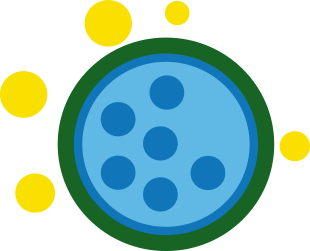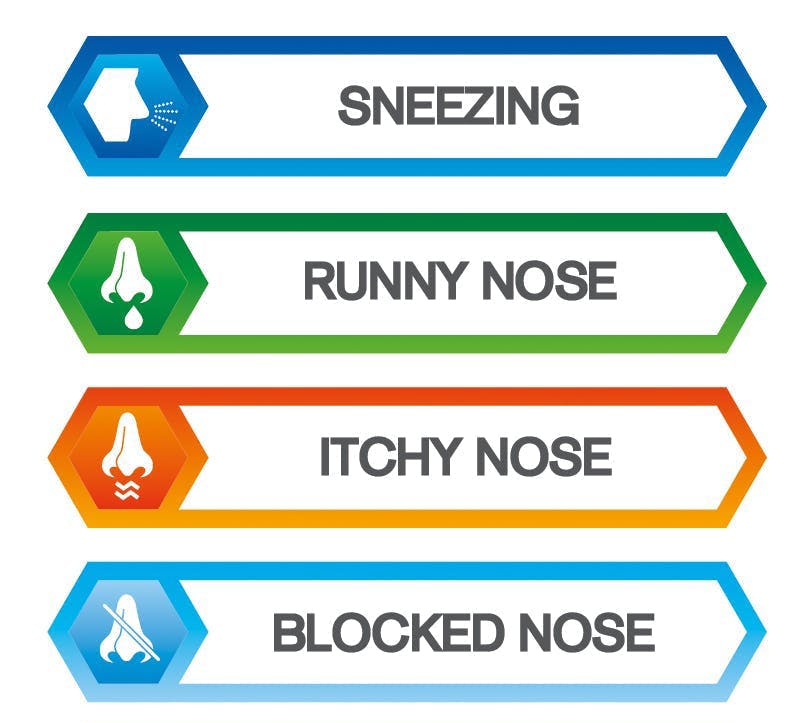
ALLERGY
SYMPTOMS
WHAT CAUSES OUR SYMPTOMS?
Allergens are allergy-causing particles that travel through the air. Below are the most common types of allergens.1

ANIMAL ALLERGENS
Minute airborne particles produced by pets like dogs or cats are called “pet dander.”

INDOOR ALLERGENS
These include mould and particles from dust mites. These allergens are with us all year long.

OUTDOOR ALLERGENS
These are seasonal allergen that include pollens from trees and grasses.
Allergens can enter our body through our nose.5, 6

They trigger a response from our immune system.5, 6

Allergic substances are released, causing your allergic symptoms.10

FLIXONASE® targets 6 key allergic substances.10, 13
FLIXONASE ALLERGY & HAYFEVER 24 HOUR starts to reduce inflammation and swelling in your nose, although it may take a few days to significantly improve symptoms. Therefore to prevent the onset of symptoms, start to use FLIXONASE a few days before expected exposure to one of your 'usual' triggers. It may take a few days for this medicine to work and it is important that you use it regularly. If you stop the treatment when you feel better your symptoms may return as the medication wears off.
FLIXONASE® not only sneezing and a runny, itchy and blocked nose, but also sinus pain and congestion.

HAYFEVER IS CHARACTERISED BY THE FOLLOWING SYMPTOMS

References
1. Yawn., Barbara (2006). Comparison of Once-Daily Intranasal Corticosteriods for the Treatment of Allergic Rhinitis: Are They All the Same? 8(1):23.
2. Allergic Rhinitis, Sinusitis, and Rhinosinusitis (2008). American Academy of Otolaryngology-Head and Neck Surgery.
3. Overview of the Immune System (2013). National Institute of Allergy and Infectious Disease.
4. Wiseman, L. R. and Benfield, P. Intranasal Fluticasone Propionate. A Reappraisal of its Pharmacology and Clinical Efficacy in the Treatment of Rhinitis. Drugs. 53(5):885-907, 1997.
5. Flixonase 24 hour Nasal Spray Product Information (PI). May 2016
6. Bousquet J et al. Allergy 2008;63(Suppl 86):8–160.
7. Bachert, C. and Geveart, P. Effect of Intranasal Corticosteroids on Release of Cytokines and Inflammatory Mediators. Allergy: European Journal of Allergy and Clinical Immunology, Supplement. 54(57): 116-123, 1999.
Always read the label. Use only as directed. If symptoms persist, see your healthcare professional.
Trade marks are owned by or licensed to the Haleon group of companies. ©2020-2022 Haleon group of companies or its licensor.



